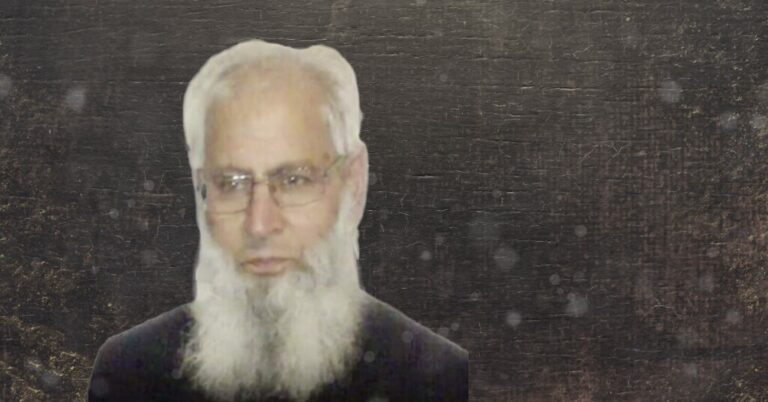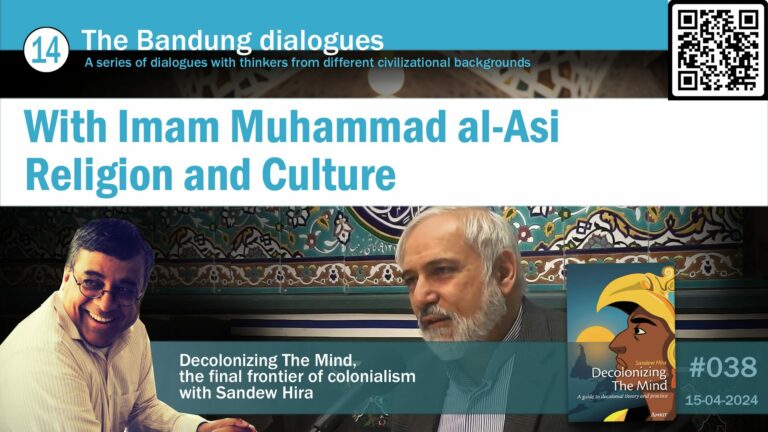————————————————————
Islamic Human Rights Commission
————————————————————
9th March 2004
Briefing: Good Practice on the Headscarf in Europe
An examination of how various European countries have tried to integrate headscarf-wearing women into the education and work sector by taking steps to accommodate their religious practices.
1. Introduction
2. UK
3. Ireland
4. Italy
5. Norway
6. Sweden
7. Denmark
8. Belgium
9. Austria
10. Germany
11. Spain
12. Netherlands
13. Conclusion
Introduction
Earlier this month, the French parliament decided to impose a ban on the Islamically prescribed headscarf and all religious symbols in state schools. Once this law is passed, Muslim girls will be denied many fundamental rights including the freedom to practice one’s religion, the right to education and to work.
The French government’s main contention is that the headscarves threaten the secularity upon which French society has been built. However, many other countries, which would consider themselves secular, have not thought it necessary to prohibit the headscarf in order to preserve the secularity of the state. In fact, many of these secular countries have introduced “best practice” policy measures regarding religious discrimination which encourage Muslim women in headscarves to integrate more in society.
UK
It is not forbidden to wear the headscarf, kippa or turban in schools. The Department of Education and Skills have said that rules on dress codes and symbols are not its responsibility but that of the governors of each school. However, this stand can cause confusion. The wearing of the kippa and turban is protected by the Race Relations Act 1976 under which Jews and Sikhs are considered racial groups. This does not apply to Muslims and there have been sporadic cases, such as in Luton and Peterborough, in which schools have attempted to ban headscarves or persuade Muslim girls not to wear them, usually from a belief that they disrupt the school environment. The Commission for Racial Equality (CRE) this month determined that a headscarf ban imposed by a school in Luton constituted ‘indirect racism.’ The school in question subsequently announced that it would be overturning its headscarf ban as of this summer.
British Deputy Foreign Secretary Mike O’Brien recently declared that, unlike France, Britain would not ban the headscarf and other religious symbols in state schools. At a meeting he had with Muslim groups, O’Brien said that France handled this issue differently due to its culture and history. ”Integrity does not need assimilation. The British identity can hold together different nations and cultures and the differences are a part of Britain’s power,” O’Brien said. However, in the absence of appropriate legislation, a policy on best practice measures is necessary to alleviate this problem.
The Metropolitan Police Force (MPF) also allows police officers to wear uniforms according to their beliefs. In the London MPF, with 28,000 employees, there are approximately 500 civil servants also working there. Muslim women were given the right to wear their headscarves at the MPF in June last year. Muslim policewomen are now allowed to wear headscarf and the ankle length gown.
In 2000, new Home Office guidelines were issued allowing Muslim women to cover their heads with the hijab, or headscarf, on their passport photographs. The new guidelines state that: ”Provided that photographs show the full face… photographs should not be rejected where a religious head-covering is worn.” The guidelines followed the case of a Muslim woman having an application to renew her passport rejected at the British High Commission in Singapore because she was wearing hijab. The refusal led Fareena Alam to campaign for her right under Britain’s 1976 racial equality act, which allows Muslim women to be exempt from removing their head scarf as it would be judged as indirect racial discrimination. For more information see, ‘Issuing of passports to British Muslimahs wearing hijab’ 11th April 2000 at:
http//:www.ihrc.org.ukshow.php?id=144
Ireland
Like the UK, rules regarding dress codes are not the responsibility of the Department of Education but that of the governing authorities of each school. Nevertheless, both the Irish Constitution and the Equal Status Act 2000 prohibit discrimination on various grounds including religious belief in the provision of goods, services and facilities. The Employment Equality Act also prohibits discrimination in employment on grounds of religious belief.
A single equality body, the Equality Authority was established under the Equal Status Act to work towards the elimination of conduct prohibited under equality legislation. It works to promote equality of opportunity in relation to matters covered under the legislation and to provide information to the public on the workings of the legislation. There have been several incidents of Muslim schoolgirls being denied access to schools due to their wearing of the headscarf. However, these cases have been speedily resolved by the Equality Authority which advised the relevant schools of the illegality of their rules.
A recent development has been the creation of a Racial and Intercultural Office within the Garda police force. Its functions include monitoring, co-ordinating and advising on all aspects of policy in areas of racial, cultural and ethnic diversity. It recently announced that it intended to incorporate the headscarf as part of the uniform to encourage Muslim women to join the force. In contrast to accommodation of headscarves by the UK police, the Irish plans for accommodation were an initiative of the police itself. There was neither pressure nor demand from any minority group or organisation to do so, nor by individual Muslims. The Garda Racial and Intercultural Office recently won an award of €30,000 as an innovation prize from the EU.
The Garda Racial and Intercultural Office has also been instrumental in efficiently tackling at least 2 incidents where Irish Muslim women were refused passports due to their wearing of the hijab. It swiftly resolved the issue in favour of the women after contacting the Department of Justice.
Italy
There have not been many reported headscarf problems in Italian schools so far. Three years ago, Muslim women organized a protest meeting in Turin when it was stipulated that foreign women had to give photos without headscarves in order to get a residence permit. To avert tension in the country, the Italian Foreign Ministry issued a circular allowing Muslim women to wear their headscarves in ID photos just like Catholic nuns.
One of the reasons that there are fewer headscarf problems in Italy may be due to the existence of a tolerant secularism concept. The secretary-general of the Union of Islamic Communities and Organizations in Italy (UCOII), Hamza Roberto Piccardo, who is of Italian origin and a Muslim as well, said the Italian Constitution secures the freedom of worship for all its citizens, hence Muslims can fulfil their religious obligations without any difficulty.
Norway
In January 2004, a Norwegian furniture store A-møbler, which fired a Muslim woman because she refused to take off her traditional headscarf, overturned its decision, and reinstated the woman. The store stated that the headscarf breached the store’s clothes code, which, among other things, prohibits the use of hats and other headgear. The Gender Equality Ombud held that A-møbler could not prohibit employees to wear headgear unless it was a danger for life and health.
Sweden
In Sweden, with a Muslim population of 350,000, the largest among northern Europe countries, few headscarf problems have occurred. In Gothenberg last year, two girls wearing ‘burqa’ could not go to their schools as a result of the school administration’s objection. The problem was however solved because the girls agreed to take off their burqas during the examination periods.
Denmark
In Denmark, headscarf is free in public domain, partially banned in private sector. Students are allowed to attend junior high schools and universities with their headscarves. Teachers in Denmark also have the right to wear the headscarf in schools. There is no problem experienced in the public sector.
During the summer of 1999, in a high-profile case, the two largest Danish chains of supermarkets, FDB and Dansk Supermarked, stated that they did not wish to employ Muslim women wearing headscarves to work at check-out desks or other visible places in stores. They claimed that headscarves were unhygienic and not compatible with their principles concerning uniforms. According to the Minister of Labour, this contravened the law on discrimination.
The present Minister of Labour, Ove Hygum, has stated in a letter sent on 5 August to the retailers and trade unions concerned that the law on discrimination in employment is violated ”if an employer forbids an employee to wear religiously motivated headgear, when the employer’s regulations on uniforms do not contain rules on headgear”.
In the year 2000, Islam Amin Bahtiyar, who was denied the chance to be a sales trainee at a store due to her headscarf, resorted to the law. Pointing out that Bahtiyar wore the headscarf as a consequence of her belief, the Odense City Court decided that the store discriminated against her and imposed a fine of 10,000 kronas as compensation.
After this decision, many businesses started preparing special uniforms for their employees wearing the headscarf. McDonalds, Toms Chocolate Factory and Coop Denmark Companies are among these firms. Special uniforms for nurses with headscarves have also been designed. The Defence Ministry has also started to prepare designs suitable for the headscarf, turban and kippa.
Minister for Migration and Integration, Bertel Haarder said the following on the issue: ”I am not the minister responsible for the headscarf. What interests me more is the people’s integration in the country rather than their clothes.” Underlining that the headscarf is a personal right and freedom, Haarder said: ”If we ban the headscarf in schools, then we have to ban Christmas celebrations and Jewish symbols. We do not have such a prohibitive mentality. While trying to drag the Muslim women from their houses and put them in the business sector, the headscarf ban will mean double-standards and the Muslim women will be isolated from the society. We will not support such a decision.”
Belgium
The Interior Ministry, according to the notification it sent to schools, leaves the option on the headscarf ban to the schools. While some schools enforce the headscarf ban, some do not. In cases taken to Belgian courts, the verdicts so far have mostly been in favour of wearing the headscarf. In 1989, the Education Ministry of the French-speaking Belgium Society issued a notification in a case concerning 50 headscarf-wearing girls and declared that it was ‘difficult’ to ban headscarves in schools. However, the ministry banned the chador (veil covering the whole face).
It is alarming in this context that Belgian Senators Socialist Anne-Marie Lizin, and Liberal Alain Destexhe have proposed a bill mirroring France’s attempt to ban religious symbols in schools. Many commentators see the move as an attempt to regain popularity from far-right parties in the run-up to Belgium’s general elections.
Austria
Again, fewer problems have been experienced on the headscarf issue in Austria, where Islam is accepted in legal and social terms, with the Law on Islam adopted in 1912. This is because religion and the state are not separated in Austria, both Islam and Christianity are among the religions recognized officially.
A female teacher wearing a headscarf can teach in schools. Meanwhile, an official establishment, which could be described as a kind of ‘religious affairs directorate,’ intervenes whenever required to solve possible problems.
Germany
Although there have been cases involving Muslim students wearing headscarves, the debate in Germany has primarily centred on Muslim teachers wearing headscarves. In September 2003, the highest Court in Germany ruled that a regional state was wrong to ban a teacher from wearing a headscarf in school. The state had argued that a teacher with a headscarf violated ‘the strict neutrality of public schools in religious issues’. The Court ruled that states must find ‘arrangements acceptable for everyone’ in striking a balance between religious freedom and neutrality in schools. However, the Court went on to declare that states could take such action to prevent undue influence on children but the matter was too contentious to be decided on an ad hoc case by case basis -thus seemingly leading the way for legislation on this issue.
In October 2003, 7 of the 16 regional states in Germany showed support for the view that the hijab should be banned from public schools, with 3 proposing to extend the ban to all public institutions. Subsequently, on 9 December 2003, the government of Bavaria unveiled a draft law prohibiting the wearing of the hijab in public schools. The Bavarian Minister for Education, Monika Hohlmeier, declared that in doing so, Bavaria was ‘defending pupils against a potential fundamentalist influence and…respecting the wishes of the majority of the parents’.
In Germany, the debate is focused on the essential Christian nature of the country. Thus the law is specific to the hijab and will not ban Christian and Jewish religious symbols. In justification of this, the Regional Culture Minister, Annette Schavan declared that the state constitution placed Christian and Western values and culture at the heart of the education system. She further justified the ban by claiming that the headscarf is ‘seen as a symbol of cultural division and part of a history of oppression of women.’ The argument goes that the headscarf operates to isolate Muslim girls from the other students. This begs the question as to what measures will be taken to integrate students of different ethnic backgrounds with ordinary white German students.
Spain
Spain, known for its strong Catholic identity, has not encountered many problems involving the headscarf. In a case which arose in February 2003, a private Catholic high school refused to allow a Muslim student, Fatma Idrisi, to come to the school with a headscarf, so her parents took their daughter from that private school and sent her to a state school. The head of the Organization for the Protection of Immigrants and Migrants, Mustafa al-Mirabet, pointed out that they have not encountered any problem other than this one and that most Muslim families send their children with their headscarves to schools.
Netherlands
The Dutch constitution protects both the freedom of religion and the right to equality. The Equal Treatment Act 1984 prohibits the imposition of directindirect discrimination in employment on grounds of religious or other belief. It also covers the provision of goods, services and facilities with particular reference to housing, education, health, welfare, sport and culture.
No law exists in the Netherlands prohibiting the headscarf, either in schools or in workplaces. In general, the authority rests on the school administration to implement the legal regulations in the educational system. Therefore, each school decides whether or not to accept a student wearing the headscarf. At present in the Netherlands, students wearing headscarves can attend classes, from elementary schools to universities, without any problem. Cases that have arisen before the Equal Rights Committee have generally been resolved in favour of the students.
However, in Amsterdam and some other cities, attending classes with a veiled face is banned by the decision of the regional education directorates.
Coskun Coruz, a deputy of the Dutch parliament, does not think that the headscarf ban will be imposed in the Netherlands. He said the following: “I believe that if the headscarf issue is regarded as fulfilling a religious obligation rather than as a symbol, there will be no problem. Thus, it should be well explained to others that this is not a symbol but a requirement of faith.”
In previous cases concerning factories, medical professions, supermarkets, and the like, wearing headscarves on the job provoked arguments of ‘safety’, ‘efficiency’, ‘accessibility’ or ‘hygiene’. However, the National Committee on Equal Treatment has ruled that a prohibition on wearing a headscarf in work situations is illegal since it is at odds with the right to religious freedom (in the Dutch context a headscarf is defined as a ‘direct’ manifestation of religious belief). Only safety-reasons or reasons of functionality could be a legitimate ground not to allow for religious headgear.
The issue of teachers wearing headscarves in state schools arose some years ago. The disagreement between the teacher and the school direction was settled by a ruling of the National Committee of Equal Treatment in 1998 which stated that a headscarf is not necessarily the symbol of religious orthodoxy and intolerance vis a vis non-Muslim beliefs or non-religious worldviews. As far as Muslim belief was not actively manifested or promoted, a headscarf as such was not a threat to the ‘open’ and ‘tolerant’ attitude that is required by the Dutch law on public education. The direction of the school should have interviewed the trainee about the meaning of wearing a headscarf first before concluding that it was an emblem of orthodoxy and intolerance.
In January 2000, the Dutch police force proposed to introduce the headscarf as part of the official police uniform. The police would provide for special headgear in the colour of ‘police-blue’ so that it would fit the rest of the police uniform. Like Ireland, this was a police initiative to encourage Muslim women to join the force. However, after much public debate, no action was actually taken.
Conclusion
Governments must show a willingness to change existing rules and laws – in this case current dress codes – in order to adapt to cultural practices that are considered crucial for the identity of minorities. By its active and accommodating attitude the government shows that it wants to go beyond ‘passive’ toleration based on the principle of non-interference (‘laissez-faire’) that leads to ‘a mere modus vivendi’ between minority and majority groups.
Through such accommodating policies the governments will make it clear that they do not expect minorities to give up their ethnic, cultural or religious identity as a precondition of equal citizenship, and that demands of equal citizenship can be combined with particular ethnic, cultural or religious commitments.
———————————————————
Islamic Human Rights Commission
PO Box 598
Wembley
HA9 7XH
United Kingdom
Telephone (+44) 20 8904 4222
Fax (+44) 20 8904 5183
Email: info@ihrc.org
Web: www.ihrc.org






